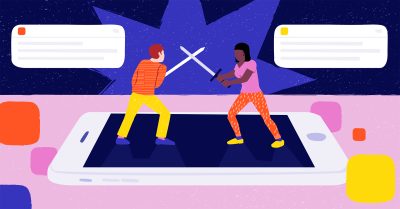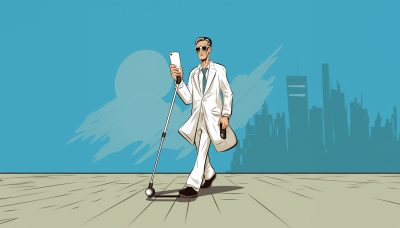
Four personas to help you create accessible digital services
There are several ways to utilize personas in human-centered design.
There are several ways to utilize personas in human-centered design.
I think the most useful persona type is behavioral personas, who are differentiated by what they do, not by who they claim to be. Their behavior is grounded in data in contrast to traditional personas, which often reflect convenient assumptions about people rather than reality. Falling somewhere in between these types are proto personas — a Lean UX compromise in the right direction, which nevertheless acknowledges its speculative nature.
Want to hear more about accessibility design, and prefer concrete and practical webinars? Join our Sovellusten saavutettavuusongelmien tunnistaminen käytännössä webinar on Wednesday 27.1.2021 at 3:00 PM to 4:15 PM GMT+2!
In the field of accessibility, we often find ourselves thinking about users with particular disabilities. This makes it easy to model them with behavioral personas to support inclusive and accessible-by-default design.
So I present to you: four personas you are free to use in your design process to think about how your specific design will support users with special needs.
Four personas for accessibility-minded design
I have intentionally left out the illustrations. If you feel like it, you can create them yourself.
Anna: Young, educated, sharp, and blind from birth
Being blind requires a totally new perspective to user experience. Many conventions of graphically-oriented interaction design break down when you are forced to operate with sound alone.
What special tools does this persona need to interact with technology:
- Screen readers
- Keyboard
- Braille display (unusual, but possible)
Typical issues this persona faces with digital services
- Some information is exclusively visual
- The screen reader may not get access to some information or controls
- Navigation can be daunting
- Keyboard access doesn’t work or gets stuck
- The language may be wrong
How to make sure this persona can use your service?
- The digital service must be accessible with a screen reader and keyboard
- Perform manual usability testing with screen readers
- Perform user testing with users who rely on screen readers
Bill: Poor vision, red-green color blind, aging
Bad eyesight is a common problem that gets worse with age. This issue has been around forever, but interface designers can easily forget about it if they don’t need reading glasses themselves.
What special-needs tools are available for them:
- Screen zoom
- Font enlargement
- Grayscale mode
Typical issues this persona faces with digital services
- Reading small text is impossible
- Mobile phone use is cumbersome with screen magnification. If magnification is not supported by the app, Bill can’t use it.
- Bill sometimes misses details because differences are highlighted with colors he can’t tell apart.
How to make sure Bill can use your service?
- Test UI designs in grayscale mode
- Test the product for zooming and text enlargement on desktop and mobile
Charlie: Middle-aged, working professional in a wheelchair with fine motor skill disabilities
Using a wheelchair poses few limitations for IT use as such, but using touch screens, pads or even a mouse is impossible if you have trouble moving your arms. However, most computing tasks can be achieved with a keyboard on both computers and mobile devices.
What special-needs ways does this persona have to interact with technology:
- Exclusive keyboard user
- Fixed tablet device
Typical issues this persona faces with digital services
- Fly-out menus and tooltips don’t work
- If keyboard navigation support is lacking, Charlie can’t access all functionality
- Apps that would require touch gestures are impossible to use
- Some mobile apps are hard to use because Charlie can’t pivot his scre
How to make sure this persona can use your service?
- The service must be accessible with a keyboard
- Apps must support both orientations
- Mobile interfaces should not include functionalities that require gestures (sliding switches, pinching, tapping); provide alternatives
Ezra: Middle-aged person with ADHD and dyslexia, working part time
Cognitive disabilities don’t make anything impossible, just harder and slower. Simplifying language and controls makes things easier for everybody and can be of particular help to people who have trouble focusing.
- What special-needs ways does this persona have to interact with technology:
- Slowing down media, taking time to read, avoiding complex language, removing distracting elements
Typical issues this persona faces with digital services
- Flashing ads or auto-play videos distract and distress Ezra
- Interruptions and abandoning certain sites or apps
- Doing things takes more time and services may sometimes time out before she/he is done
How to make sure this persona can use your service?
- Prefer simple, self-explanatory terms and language over jargon
- Be consistent in language and user interface design to support learning
- Do not use auto-play audiovisual content in your service and provide appropriate controls
Conclusions: How to utilize these personas to help create accessible products and services?
These four personas capture a variety of reasons why accessibility is a consideration in the first place. There are millions of people in the world who have special needs when it comes to digital services. This “proto behavioral persona” spectrum describes a few of the most essential characteristics: being blind or having poor eyesight, motor dysfunctions, or cognitive disabilities.
The way each disability is supported by a service is the measure of accessibility. The suggestions I have provided with each persona can be easily mapped into accessibility requirements such as WCAG success criteria, but I have intentionally avoided them to keep this proposition as understandable as possible.
I welcome your feedback and ideas on how to make the personas better. A digital society with equal rights of participation requires every designer and developer to keep accessibility on their agenda!



